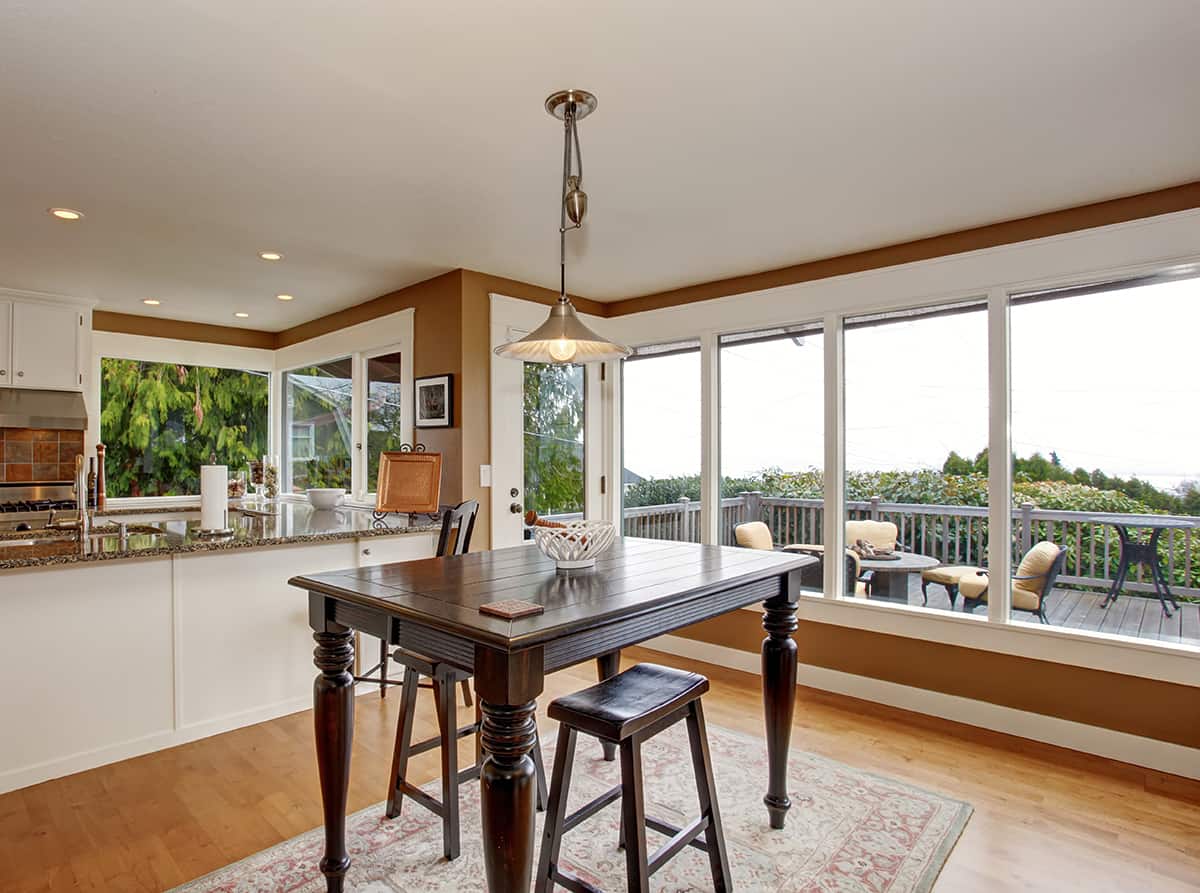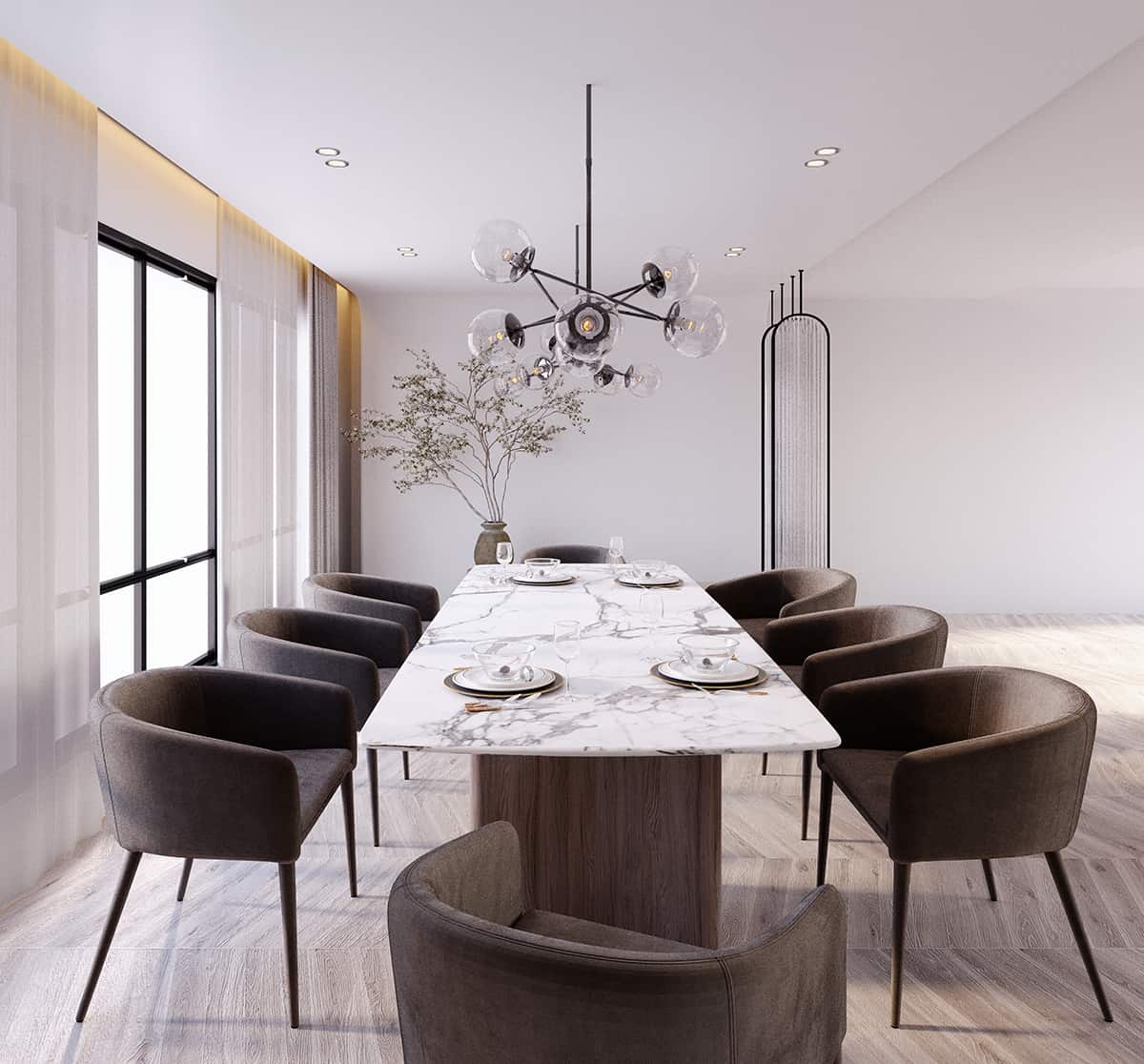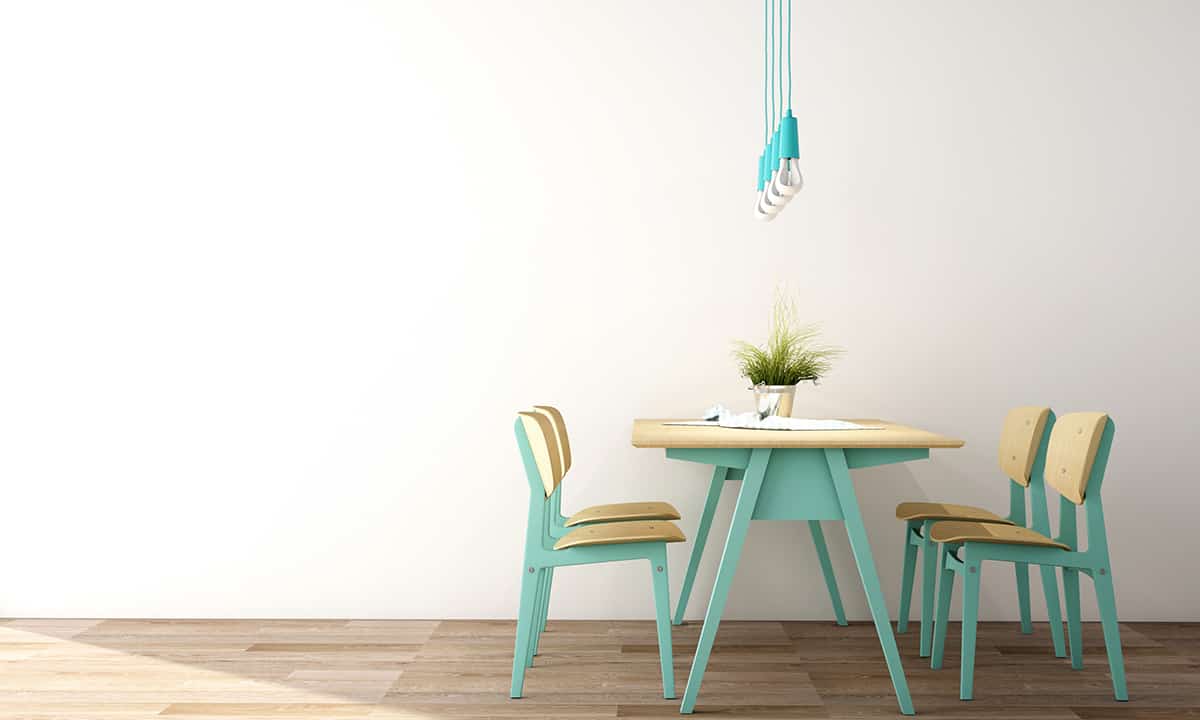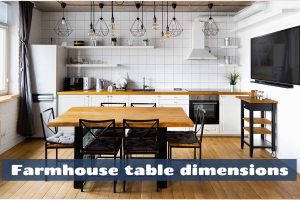When you’re looking for a new light fitting for the dining room, there are so many practical questions to address before you even consider the style of the light. How big should the light fitting be in comparison to the size of the dining table or the size of the room? How far from the table should the bottom of the light fixture be, and how far from the ceiling should it hang down? These are the types of questions even interior designers can struggle with, because there is no straightforward answer.
Instead, the best height and size for a light fitting in the dining room will depend on a number of factors, including the size of the room, the height of the ceiling, the function of the light, and the type of atmosphere you’re looking to achieve. Once you know these details, you can move on to figuring out the answers to your initial questions.
Here we explore how to judge the best height and size for light fixtures in the dining room, and look at some tips that interior designers have to offer on the subject.
Standard Light Fixture Height in the Dining Room
The general advice for the height at which a ceiling light should be hung in the dining room is 36 inches above the surface of the dining table.
This is because, at 36 inches from the tabletop, the light will be low enough to create a warm glow over the table without interfering with sight lines for anyone seated at the table. The last thing anyone wants when they are entertaining is to have to duck below the light pendant in order to see the person sitting across from them.
At 36 inches in height, this certainly won’t be an issue, but depending on the height of the room, the size of the room, and the light fitting you have, 36 inches should be a guideline rather than a rule. In a room with tall ceilings, having a light pendant so close to the dining table can make the space feel unbalanced or out of proportion.
Noelle Parks of Noelle Interiors in Ireland explains: “Generally, the taller the ceiling, the more clearance you want so the hanging fixture balances with the scale of the space.”
Light Fitting Height According to Ceiling Height
The height of the ceilings in a room is going to directly affect the best height for a light fixture positioned over a dining table. This is because the light fixture plays a key role in creating balance in the space and maintaining a sense of proportion. If the light hangs too low, then it can feel like there’s a huge vacant space throughout the whole upper half of the room.
Hanging the light fitting slightly higher than usual can help fill this space for a more balanced feel. This also has the added effect of making the light fitting more of a focus in the room, so you can take advantage of choosing a real showstopper of a light fitting to make a statement.
Tracy Morris of Tracy Morris Design says, “If you have 8ft ceilings, the standard rule is to hang the chandelier 36 inches above the table. If your ceilings are 10ft, we like to hang the chandelier 40-42 inches above the table.” First, measure the height of your ceilings to determine how much space should be between your table and the light fitting. For a ceiling height of 8 feet, the light should hang at around 32 to 36 inches from the tabletop.
Add 3 to 6 inches of length in your light fixture cable or chain for every additional foot in ceiling height. For a ceiling height of 9 feet, there should be a distance of between 36 and 40 inches between the bottom of the light and the top of your dining table. For a ceiling height of 10 feet, there should be a distance of between 40 and 44 inches from the bottom of the light to the top of the table.
This rule works well in most cases, but of course, there will always be exceptions. Because of this, Phillip Thomas from Phillip Thomas Inc, an interior designer studio based in New York City, recommends that you should always be present when an electrician is installing a light fitting in the dining room. He says, “It is important to be present during chandelier installations to ensure that the height is perfect. Viewing the chandelier both from a standing and a sitting position is key.”
Amy Forshew from Proximity Interior Design in Pennsylvania agrees: “While the rule of thumb is at least 36 inches above the table, I insist on being there when the electrician hangs the light. Every room is different – I take into consideration the ceiling height, the size and scale of the chandelier, the mass of the table, and most of all my clients!”
How Close to the Dining Table Should Light Be?
The distance between the dining table and the light is generally recommended to be 36 inches, but this can vary according to the size of the room, the height of the ceilings, the type of light fitting you’ve chosen, and the type of atmosphere you’re trying to achieve. As we’ve explained above, a taller ceiling usually means that the light fitting will look better slightly further from the table’s surface to help balance out the room’s proportions.
However, in some instances, a distance of 36 inches between the light fitting and the dining table can actually be too much. If you want a more intimate feel at your dining table, similar to that which you might find in a cozy restaurant booth, then you can lower the light fitting so that there’s a distance of between 26 and 36 inches from the bottom of the light fixture to the surface of the table.
The lower the light fitting is, the more cozy and intimate the dining experience will feel, you need to be careful not to obstruct anyones line of vision with the light fitting.
To to do this, sit the tallest member of your family at the table and position the height of the light accordingly. It should be high enough that the persons vision directly across the table is not impeded by the light while they are seated. If you want your light fixture to be installed higher up, this will increase the distance between the table and the light fitting.
By wary of positioning the light too high in the room, as this can make the space feel slightly awkward. Susan Sutter from Sutter Interiors suggests that “keeping the link between the table and light is critical so they are viewed as one element.” If the light is too high up in the space, the link between the table and the light is broken, and they will appear like two disjointed pieces.
How Big Should a Light Fixture Be?
The ideal size of a light fitting depends on the scale of the room, the size of the dining table, and the style you’re trying to achieve. In a large room with tall ceilings and generous proportions, an oversized light fitting can look spectacular.
It helps to center the room and create a focal point while also adding drama and elegance. Small light fittings tend to look old-fashioned, while larger light fittings bring a modern touch to a room.
Tracy Morris explains that in her interior design projects, she likes “to use oversized and often fairly low-hanging pendant lighting in a dining room. This fills the space and makes a dramatic statement in what might otherwise be a fairly traditional design.”
Similarly, Louise Wicksteed, who is the design director for Sims Hildtich in London, says, “’If you are lucky enough to have a dining room with high ceilings and windows, having a statement light pendent is a great way to fill the space and adds an element of drama to the design.”
Light Fittings According to Function and Atmosphere
Deciding what size and height your dining room light should be is not just about how it looks; it’s also about what you plan to use the light for and the type of light it gives off. A warm glow works well for a dinner party. However, this isn’t going to be very productive for teenagers who might do their homework at the family dining table.
Consider the way your dining table is used, and plan the light accordingly. For a multifunctional space, a dimmer switch is a great idea so you can have bright light when you need to work at the table and low light for entertaining. Also, consider the color of your lightbulbs as this will have an impact on both functionality and atmosphere.








